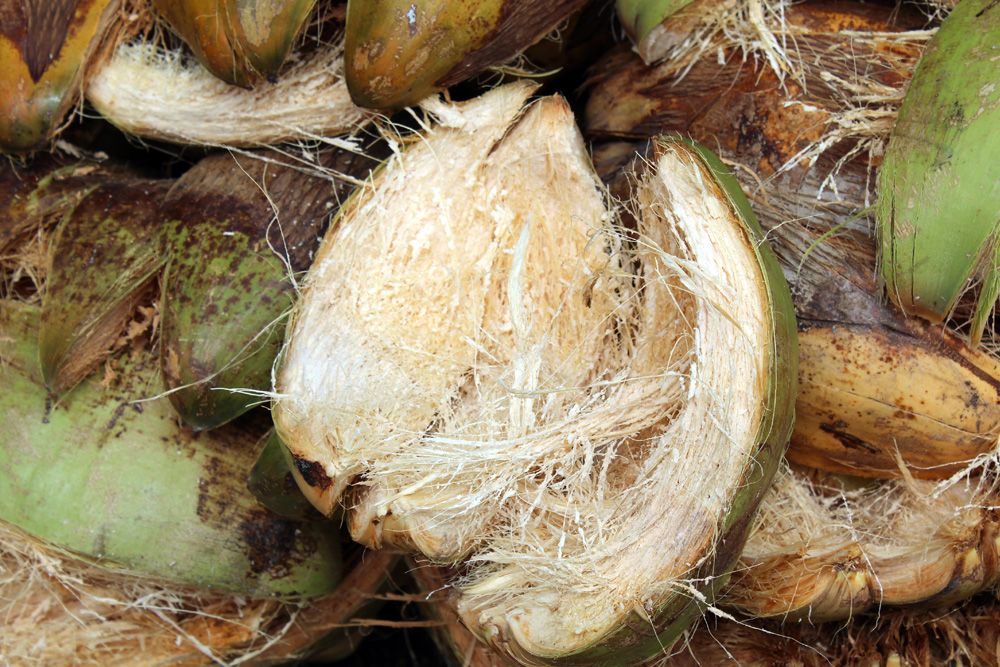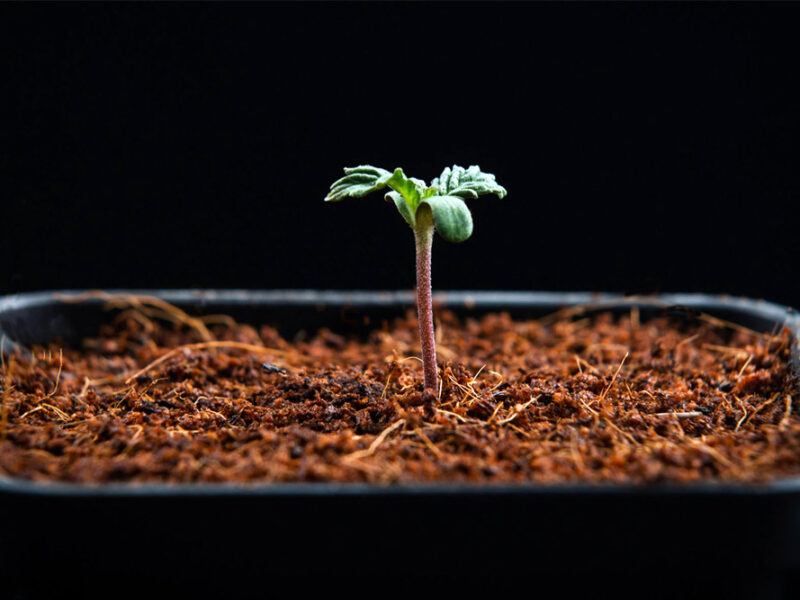The coconut palm (Cocos nucifera) is a common sight in coastal tropical regions. It is known as the tree of life in some regions, as it is capable of providing such a wide range of life’s necessities, including food, fuel, cosmetics, medicine, and building materials. At one time it was considered that the coconut palm was distributed throughout the tropical world by ocean currents, but research has shown that mankind was the most likely distributor of this plant, although it’s origin and pre-human dispersal is unclear. What is clear is that there are two major sources of the genus Cocos, namely Indo-Pacific and South America , and that there are subtle difference between the two, particularly with reference to the fruit.

In fact the fruit of the coconut is not a a true nut, but a drupe which comprises three distinct layers, the exocarp, mesocarp and endocarp. The exocarp and mesocarp make up the husk of the “nut”, while the endocarp makes up the hard shell, which is hollow, and filled with coconut water which eventually becomes the edible flesh of the coconut.
Large scale development of coconut plantations occurred in tropical countries in the late 19th and 20th Centuries, when it was discovered that the flesh of the coconut could be dried in the sun into a product called copra which could then be exported as a valuable source of edible oil.
This left the plantations with the outer husk of the fruit and the hard shell.
The hard shell can be converted into a high-quality charcoal, and the outer husk (coir) found a ready use for the production of coir ropes. This, however, resulted in large quantities of fine coir particles (coir pith) of no commercial value being dumped in large waste heaps which provided a home for various pests and also a potential source of pools of water, which became the home for mosquitoes etc.

In the 1970/80’s the horticultural industry in developed countries became aware of the importance of peat environmentally, and viewed coir pith as an alternative potting medium component. Initially this was successful, as any sodium in the older heaps had been well leached by rain over the years, but as the more recently processed coir was used, sodium started to cause problems.
Find out more advantages of using coconut coir
This problem can be solved either by buffering the coir prior to drying it, by leaching any sodium from the coir by means of a solution of calcium nitrate, and then leaching any excess calcium nitrate from the coir using fresh water, or alternatively drying the coir and then compressing it and exporting it as untreated coconut coir, so that the sodium would require leaching out by the grower prior to planting the crop. Under these circumstances the final water leaching would be replaced by the normal hydroponic solution.
Because the original coir pith was the coir remaining after the long fibres had been removed for rope production, it tended to comprise more small particles than current horticultural coir, which is usually derived from the whole of the coconut husk, chopped up. This has important implications for the aeration and water holding characteristics of coir, which will discussed in a later blog.
Read More about Growing Media



